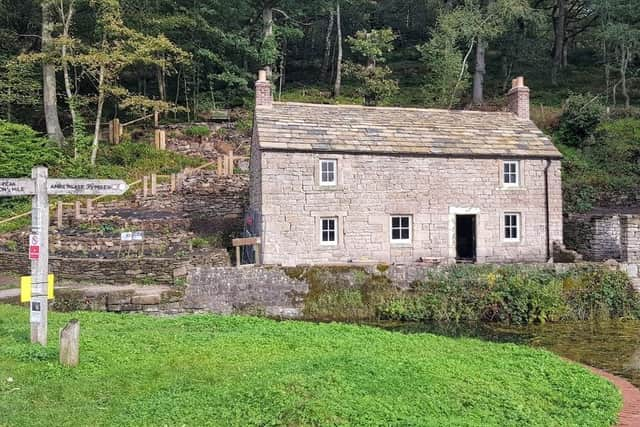Historic Derbyshire canal cottage receives special mention from the Royal Institute of British Architects
and live on Freeview channel 276
As previously reported, Aqueduct Cottage near Lea Bridge was in contention for the prestigious MacEwen Award by the Royal Institute of British Architects (RIBA) Journal, and though it ultimately missed out on the top prize last week the judging panel saw fit to honour the project with a ‘special mention.’
Kathy MacEwen, planner and daughter of conservation campaigners Anni and Malcolm MacEwen, after whom the award is named, said: “I fell in love with it, with the story of it. For £90,000 it is amazing, everybody working so hard to make an exquisite building out of a total ruin that has become an asset.”
Advertisement
Hide AdAdvertisement
Hide AdOther members of the judging panel remarked how many people had been committed to the project over a long period to make it work, with BDP architect Stacey Barry – herself a canal restoration volunteer – noting from experience how ‘really passionate people’ are needed to carry such ventures through.


The cottage, built around 1802 by industrialist and landowner Peter Nightingale – great-uncle of healthcare pioneer Florence – stands at a key point in the Derwent Valley Mills World Heritage Site marking a junction on the late 18th century Cromford Canal, south of its eponymous aqueduct spanning the River Derwent.
Today it also marks an entrance to Lea Wood Nature Reserve, which was created by Derbyshire Wildlife Trust in 2012 from land gifted to the charity by local residents who wanted to save it from development.
The cottage had been abandoned for 40 years until the trust began work to revive it as an exhibition and education space.
Advertisement
Hide AdAdvertisement
Hide AdAmong the many local volunteers who contributed thousands of hours of time to the project, one of the most passionate was architect James Boon, whose Cromford-based practice specialises in the conservation, adaption and extension of listed and historic buildings.
James said: “This proves that architecture is not all about big, fancy flashy ideas and London skyscrapers. It’s about all the people involved, and showing how a community can come together and make a difference. There’s something really powerful in that.
“Usually we might come up with a specification and hand it over to a builder, and Andrew Churchman did a fantastic job with the repairs, but with so much of the work being done by volunteers, we got to a lot of work with them too.”
He added: “It was a wonderful project to be involved with. With the building in a particularly poor state of ruin, there were challenges in trying to find the right way to survey it and do the repairs around practicality and cost – but it was mainly about being faithful to what was there originally.
Advertisement
Hide AdAdvertisement
Hide Ad“In the end the building speaks for itself, showing how natural and built heritage can work together. Looking back at photos of the way it was, and seeing it now, almost as good as new, being enjoyed by people, brings an enormous sense of satisfaction.”